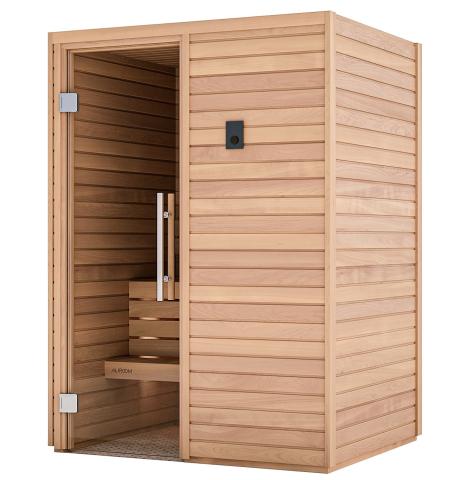Traditional Sauna Fundamentals Explained
Traditional Sauna Fundamentals Explained
Blog Article
About Traditional Sauna
Table of ContentsTraditional Sauna for BeginnersExcitement About Traditional SaunaEverything about Traditional SaunaTraditional Sauna Can Be Fun For Everyone
A lot of the weight shed in a sauna is water loss and is re-gained upon rehydrating. Nevertheless, undoubtedly sauna can be a fundamental part of a healthy and balanced weight loss program. To consider the distinctions in between standard and IR saunas, I will divide these right into proven, academic, and fabricated distinctions.Hence, the most popular point in the saunawhich goes to the ceiling straight above the sauna heateris generally between 185 and 190 F. Traditional Sauna. Claims that a standard sauna goes beyond 200 F is merely not true and not appropriate for electric saunas sold in the United States. The temperature level for a far-infrared sauna is normally set between 120 and 140 F; nevertheless, unlike the traditional sauna, the objective in and IR space is not to accomplish a high temperature level
Since of this, the temperature level distinction is almost unnecessary, because profuse sweating causes both sauna types, however the method of warming the body is different. In an IR sauna the bather will feel warm and will sweat a lot, but at much reduced temperatures. Hence, if the goal is to spend longer periods of time in the sauna, the IR sauna is an excellent choice.

The 8-Minute Rule for Traditional Sauna
When the heat is attained, the components cycle on and off to keep the high temperature. Most conventional sauna individuals take pleasure in putting water over the rocks to produce heavy steam to increase sauna humidity levels. The advantages of putting water over the rocks consist of: making the space extra comfortable, dampening the nasal passages, and enabling the use of aromatherapy by mixing necessary oils with the water.
In a far-infrared sauna, the warm waves pass through the body to successfully warm the body and raise the body core temperature. To achieve this increased temperature level, Far-infrared emitters create infrared energy which is close to the very same wavelength as that which the body normally emitsoften described as the "Vital Range" of 7 to 14 microns), so the power is well obtained by the body.
When the energy gets in the body, it creates the body temperature level to boost and eventually causes perspiration. In an infrared sauna it is necessary for the emitters/heaters to remain on almost frequently. Considering that there is no mass of rocks to maintain warm, the sauna will cool down if the emitters shut off.
As pointed out above, the her response sauna bather in an infrared area intends to position himself before running emitters to get optimal take advantage of the heat. The heating time for both areas can be extremely different, depending upon exactly how the rooms are made use of. For a standard sauna, a bather should allow 30-40 mins for the room to attain a preferred temperature level and to effectively pre-heat the rocks.
Some Known Facts About Traditional Sauna.
A well built sauna will usually attain a temperature level of 150-160 F in regarding 30-40 mins (Traditional Sauna). For hotter temperatures, the area might need to warm for a longer duration. Once the space accomplishes set temperature level, the heating system will cycle on and off, commonly operating about 50% of the time. The protected wall surfaces and the warmed rocks will maintain the room hot and at steady temperature levels.
To some, 15 mins was "wasted" while the infrared energy heated up the timber panels instead of heating a body, while others discover a pre-heated space to be a lot more comfortable and think a raised beginning temperature level is necessary to start sweating. The size of advised usage for each space is around the exact same (10-15 mins per session); nevertheless, as a result of the lower air temperatures and the ability to really feel the effects of infrared warm quicker than a typical sauna, it is not unusual for an individual to invest a total amount of 20-30 minutes in an infrared sauna.
Traditional saunas tend to be larger (therefore make use of even more power) than infrared saunas, although typical saunas are absolutely offered in one and two person sizes. For a two-person typical sauna, 5x6 or 5x7 dimension is most preferred. The leading bench can conveniently seat two or 3 people and is also enough time to relax throughout the sauna session.


The typical cost per kWH of electricity in the united state is approximately $0.11, so a 4.5 kW heating system will set you back approximately $.50 to compete one hour, if look at here now the heating unit runs continually for one hour. Normally a sauna heater will certainly compete 75% of the initial hour and 50% of subsequent hours on considering that the components cycle once the set temperature level is achieved.
The Ultimate Guide To Traditional Sauna
A two person far-infrared space is generally literally smaller sized than a traditional sauna, typically concerning 4' x 4' or smaller sized. The IR heating system is commonly 1.5-1.7 kW using a 120 volt 15 amp plug-in service. Since the room can be utilized earlier than a sauna room, we will assume the room is used for to of an hour consisting of warm up time.
There is a hardly ever reviewed difference in the social experience between the two areas. While our society has actually shed several of the social advantage of the typical sauna experience, it can be really socially satisfying. From family time in the sauna, to heart-felt conversations with better halves, to sauna partiesthe typical sauna experience can cause intimate mingling.
Many higher end infrared areas include tinted light treatment, sound systems and full-glass More hints fronts.
Report this page